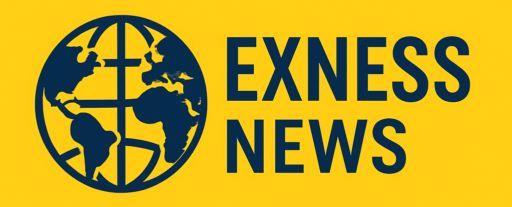Defence
Canada Pivotal Moment
Canada stands at a pivotal moment on the global and domestic stage. This article unpacks these multifaceted developments, situating them within Canada’s evolving economic, political, and social pathways. Canada Pivotal Moment
Defence Ambitions News By Exness News

Meeting NATO Defence Goal Ahead of Schedule
On June 9, 2025, Prime Minister Mark Carney announced that Canada will meet NATO’s defense spending benchmark of 2% of GDP this year—fully five years ahead of its original 2030 target .
This marks a sea change in Canadian defense policy:
- Carney emphasized this as a security necessity—not simply appeasement. Investments will prioritise Arctic surveillance, drones, submarines, and domestic defense manufacturing capabilities .
- The announcement aligns with Canada’s upcoming hosting of the G7 Summit (June 15–17, 2025) in Kananaskis, where Carney will press allies ahead of a NATO summit .
Analysts call it a strategic pivot: signaling independence from U.S. defense reliance, asserting global leadership, and responding to escalating threats from Russia and China .
Why this matters
- Defence Industry Impact:Billions will funnel into domestic defense firms, boosting jobs, R&D, and economic resilience.
- Defence Ambitions
Meeting NATO Defence Goal Ahead of Schedule
Farming Shift: From Canola to Spring Wheat
June 9, 2025: Reuters reports a major shift among Canadian farmers—they are turning away from once-lucrative canola and doubling down on spring wheat. Why?
Defence
- Tariffs: Ongoing trade sanctions from China and the U.S. have severely hampered canola exports—a $14.5 billion industry.
- Risk Aversion: Faced with diminishing profits, high input costs, and crop disease, farmers are opting for wheat, backed by robust demand from UK bakers and other markets.
- Acreage Swell: Analysts predict millions of acres shifting to wheat—aligning with global demand and supported by new seed varieties.
Farming Shift: From Canola to Spring Wheat
High-Stakes in the Hockey Canada Courtroom
- The defense called E.M “not a reliable witness,” claiming her story is driven by shame, not assault.
- The trial tests broader narratives around athlete accountability, institutional culture, and justice.
- Defence
Outcome significance:
- A conviction could recalibrate public trust in Hockey Canada, media coverage of athlete conduct, and survivor advocacy.
- An acquittal may intensify debates on victim credibility assessments, fairness, and evidentiary thresholds.
High-Stakes in the Hockey Canada Courtroom
Invitation To Narendra Modi
Carney’s invite to Indian Prime Minister Narendra Modi for the Kananaskis G7 Summit (June 15–17) has sparked significant controversy :
Defence
- The invite comes amid heightened tensions after Canadian authorities accused Indian agents of the 2023 killing of activist Hardeep Singh Nijjar in British Columbia.
- Critics—such as the World Sikh Organization—have decried the move as a betrayal to Sikh Canadians, demanding accountability.
- Carney defended the invite, citing India’s strategic importance in global issues like AI, energy, and critical minerals.
Defence
Diplomatic stakes:
- Canada stands to regain bilateral momentum with India after a diplomatic freeze under Trudeau.
- But the decision stirs domestic angst among Sikh communities and shadow over Canada’s reckoning with foreign interference.
Removing inter-provincial trade barriers
On June 6, Ottawa introduced broad legislation to remove inter-provincial trade barriers and accelerate national infrastructure projects
Key features include:
- The Free Trade and Labour Mobility in Canada Act, eliminating tariffs, permitting freer movement of workers, and harmonizing regulations.
- The Building Canada Act, aimed at fast-tracking major projects in energy, transport, and natural resources—aligned with a G7 commitment to a unified economy .
Implications:
- Could mobilize over C$530 billion in internal trade across borders.
- Supports federal-provincial-Indigenous partnerships on national priorities.
- Serves as a domestic counterbalance to external trade pressures—particularly from the U.S.
Removing inter-provincial trade barriers
G7 & Royal Boost: A Symbolic Backdrop
- The 51st G7 Summit, hosted in Kananaskis from June 15–17, places Canada in the global spotlight .
- On May 26–27, King Charles III and Queen Camilla visited Ottawa—the first royal visit since 1977—underscoring shared Canadian identity amid geopolitical friction.
Collectively, these events bolster Canada’s leadership narrative ahead of the G7. Combined with defense and economic announcements, they project a coordinated posture on national unity, sovereignty, and international influence.
G7 & Royal Boost: A Symbolic Backdrop
Conclusion
Canada’s June 2025 narrative is defined by decisive pivots: defense independence, agricultural reorientation, justice system scrutiny, and internal trade reform. With global pressures mounting—from tariffs to geopolitical tensions—Carney’s leadership is both strategic and symbolic. As Canada hosts the G7, and prepares for Arctic threats, trade realignments, and diplomatic challenges, one thing is clear—this moment reflects a nation transitioning from traditional alliances to assertive autonomy.
Canada is not merely responding to change; it is engineering a transformation—one that spans defense, economy, politics, and identity.
- Stay with Exness News for exclusive updates, on-the-ground coverage, and deeper analysis of Canada’s immigration flashpoints. Subscribe now to stay informed.
